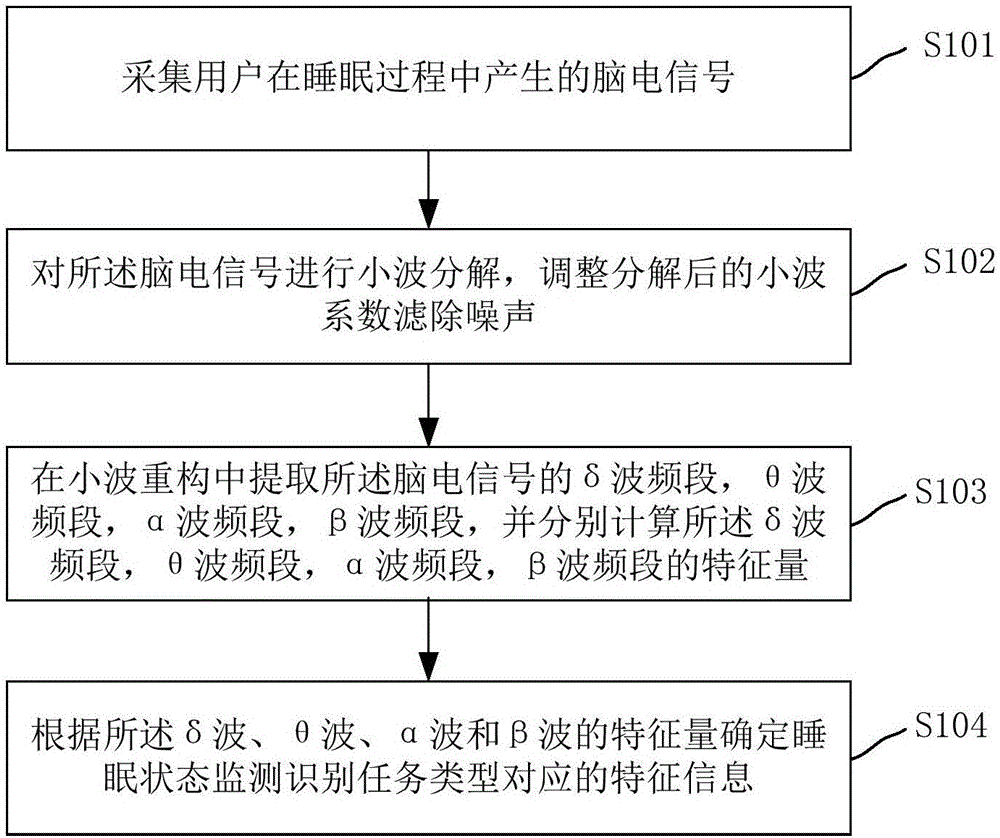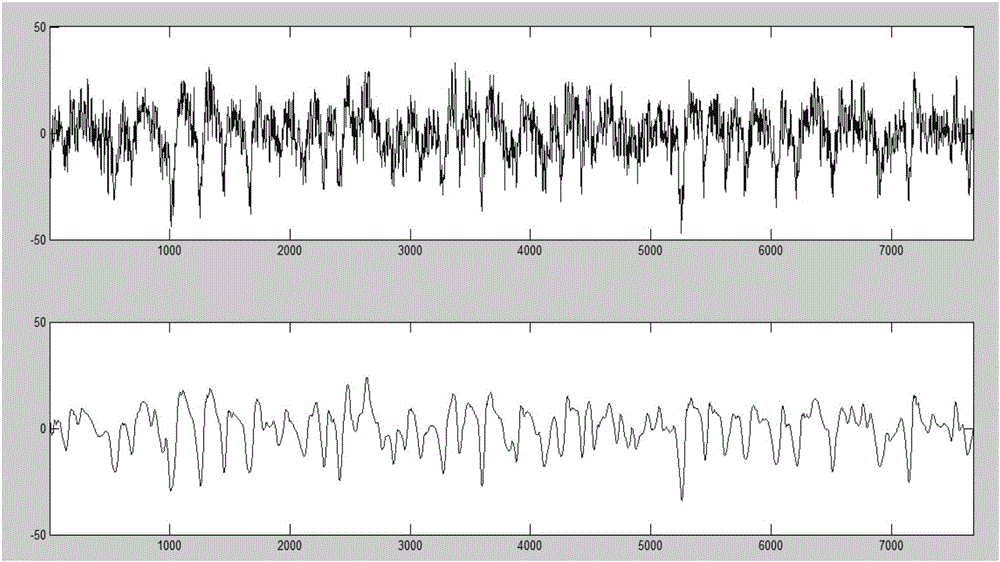Method and system for processing electroencephalogram for monitoring sleeping state
An EEG signal and sleep state technology, applied in the field of sleep assistance, can solve problems such as low EEG signal processing efficiency, and achieve the effect of improving processing efficiency
- Summary
- Abstract
- Description
- Claims
- Application Information
AI Technical Summary
Problems solved by technology
Method used
Image
Examples
Embodiment Construction
[0020] Embodiments of the EEG signal processing method and system for sleep state monitoring of the present invention will be described below with reference to the accompanying drawings.
[0021] refer to figure 1 as shown, figure 1 It is a flow chart of the EEG signal processing method for sleep state monitoring of the present invention, including:
[0022] S101, collecting EEG signals generated by the user during sleep;
[0023] In this step, for example, when assisting the user to sleep, the user wears a relevant sensor device to detect the user's EEG signal, which can be collected in a frame of 30s.
[0024] In one embodiment, considering that the EEG signal is very weak (microvolt level), it is easily interfered by bioelectrical signals from other parts. For example, the phenomenon of baseline drift caused by the superimposition of the electrooculogram signal on the electroencephalogram signal, therefore, may also include the step of removing the electrooculogram artif...
PUM
 Login to View More
Login to View More Abstract
Description
Claims
Application Information
 Login to View More
Login to View More - R&D
- Intellectual Property
- Life Sciences
- Materials
- Tech Scout
- Unparalleled Data Quality
- Higher Quality Content
- 60% Fewer Hallucinations
Browse by: Latest US Patents, China's latest patents, Technical Efficacy Thesaurus, Application Domain, Technology Topic, Popular Technical Reports.
© 2025 PatSnap. All rights reserved.Legal|Privacy policy|Modern Slavery Act Transparency Statement|Sitemap|About US| Contact US: help@patsnap.com



